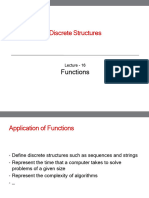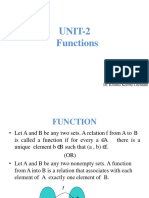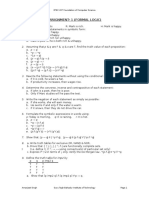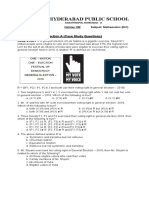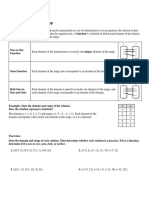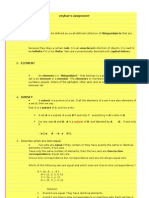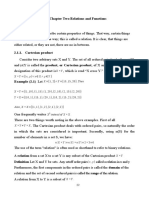0% found this document useful (0 votes)
35 views26 pagesLecture 5 Function
The document provides an overview of functions in discrete mathematics, defining key concepts such as domain, codomain, one-to-one (injective), onto (surjective), and bijective functions. It explains the importance of inverse functions and function composition, along with examples to illustrate these concepts. Additionally, it introduces useful functions like floor and ceiling, concluding with examples of these functions.
Uploaded by
joy331456Copyright
© © All Rights Reserved
We take content rights seriously. If you suspect this is your content, claim it here.
Available Formats
Download as PPTX, PDF, TXT or read online on Scribd
0% found this document useful (0 votes)
35 views26 pagesLecture 5 Function
The document provides an overview of functions in discrete mathematics, defining key concepts such as domain, codomain, one-to-one (injective), onto (surjective), and bijective functions. It explains the importance of inverse functions and function composition, along with examples to illustrate these concepts. Additionally, it introduces useful functions like floor and ceiling, concluding with examples of these functions.
Uploaded by
joy331456Copyright
© © All Rights Reserved
We take content rights seriously. If you suspect this is your content, claim it here.
Available Formats
Download as PPTX, PDF, TXT or read online on Scribd
/ 26












